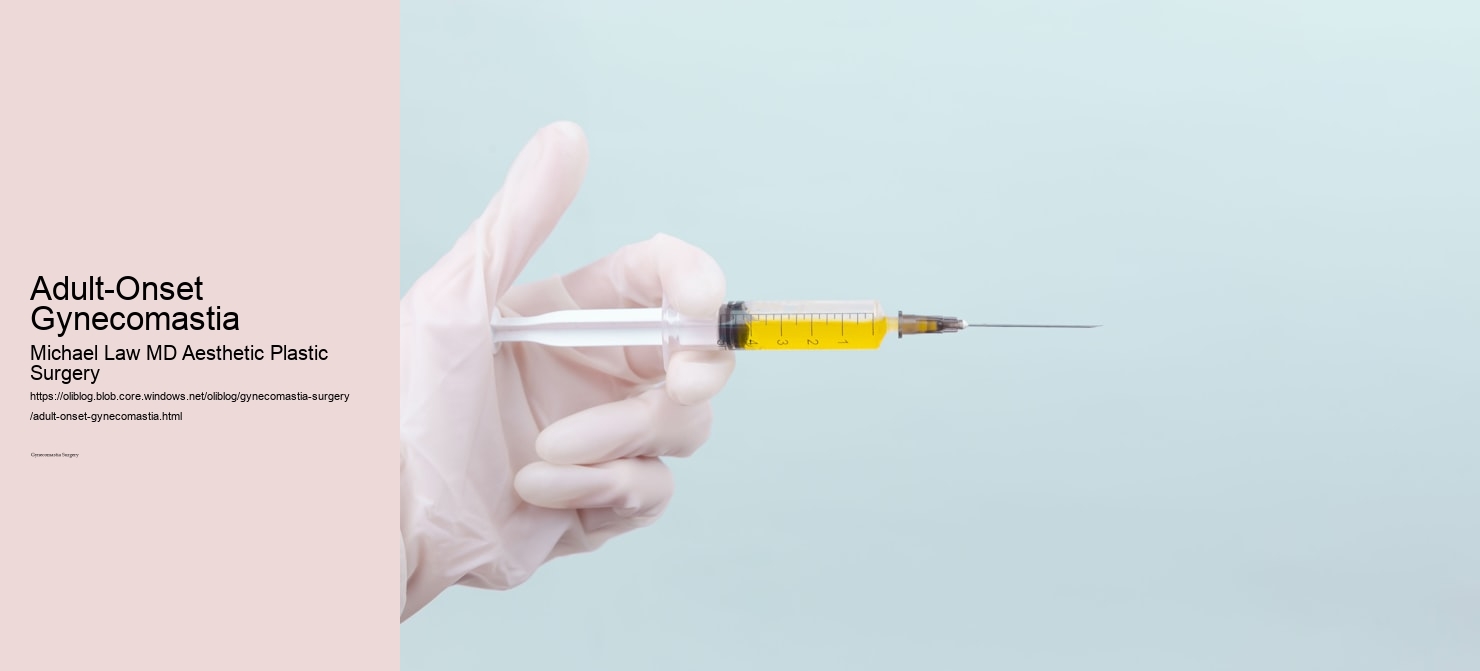

Patients are encouraged to discuss their specific circumstances with their insurance providers to explore any potential benefits. A compression garment is worn to support healing, reduce swelling, and improve skin retraction. In cases of severe gynecomastia where significant skin laxity exists, additional procedures may be required to remove excess skin. Revision surgeries focus on correcting these issues, often using advanced techniques such as fat grafting or scar revision to achieve a more aesthetically pleasing result.
This approach involves removing the tissue through a small incision along the lower border of the areola, leaving minimal visible scarring. Common issues include residual breast tissue, contour irregularities, or unfavorable scarring. For patients requiring more extensive corrections, the decision to proceed with skin excision is carefully weighed against the aesthetic outcomes.
A compression garment is worn to reduce swelling, support the healing process, and improve skin contraction. Minimizing scarring is a priority in gynecomastia surgery. While these procedures may result in more visible scarring, careful surgical planning and advanced post-operative care minimize their impact.
Unfortunately, most insurance providers categorize this procedure as cosmetic, excluding it from coverage. Expertise, experience, and a focus on individualized care are essential qualities in a plastic surgeon. For patients considering gynecomastia surgery, understanding the procedure, its outcomes, and the recovery process is essential.
Modern surgical techniques prioritize minimizing scarring by placing incisions strategically in less noticeable areas, such as the border of the areola or within natural skin folds. Gynecomastia surgery has far-reaching benefits beyond the physical. For some, the enlargement may primarily involve glandular tissue requiring excision, while others may experience a combination of fatty deposits and glandular tissue.
It can present in different forms, ranging from a slight swelling around the nipple area to a more pronounced enlargement involving both glandular and fatty tissues. Whether addressing a mild case of glandular tissue enlargement or a complex condition requiring staged procedures, the goal is always to create a natural, masculine chest appearance with minimal scarring and a positive impact on the patient's life.
Most procedures are performed on an outpatient basis, allowing patients to return home the same day. Many patients report that any residual scarring is a small trade-off for the improved quality of life achieved through surgery.
Patients are encouraged to consult with their insurance providers for clarification. Other contributing factors include weight changes, certain medications, medical conditions, and the use of anabolic steroids.
Some patients may seek correction for results from previous surgeries that left excess tissue, irregular contours, or visible scars. The cost of gynecomastia surgery is another consideration for many patients. This condition often results from hormonal imbalances, lifestyle factors, or certain medical treatments. Choosing the right surgeon is critical for achieving the best outcomes.
Modern surgical techniques prioritize minimal scarring by placing incisions in inconspicuous locations, such as the border of the areola or within natural folds of the chest. Most patients find that any residual scarring is a small trade-off for the significant improvement in their chest appearance and self-confidence. Patients generally resume normal activities within a few days, though strenuous exercise is often delayed for several weeks to ensure optimal results.
Careful evaluation by an experienced surgeon ensures that these procedures improve both form and function. At Michael Law MD's practice, the focus is on providing compassionate care and delivering results that meet each patient's goals. A thorough evaluation by an experienced surgeon is essential for planning and executing these procedures.
For patients with a combination of glandular and fatty tissue, liposuction is often used alongside excision to sculpt the chest and achieve a smooth contour. Some cases involve only glandular tissue, presenting as a firm lump behind the nipple. The cost of gynecomastia surgery can be a concern for some patients, as most health insurance providers consider the procedure cosmetic and exclude it from coverage.


In some cases, the condition may include excess skin, further impacting the chest's appearance. For mild cases involving only glandular tissue, direct excision through a small incision along the lower border of the areola is the preferred approach. In cases of "pseudogynecomastia," the appearance results from fat accumulation without significant glandular development. For more complex cases, advanced techniques are used to minimize scar visibility.
Understanding the specific factors behind each patient's condition helps inform the most effective treatment plan. Selecting the right surgeon is an essential step in ensuring successful outcomes. Gynecomastia is a common condition affecting men of various ages, characterized by the enlargement of breast tissue.
The commitment to precision, patient satisfaction, and long-term results ensures that each individual receives the highest standard of care. A condition called pseudogynecomastia may also occur, where breast enlargement results from excess fat without significant glandular development. Regardless of insurance coverage, many patients find the physical and emotional benefits of gynecomastia surgery to be well worth the investment.
Revisional surgeries involve addressing these concerns through techniques such as tissue removal, fat grafting, or scar revision. In cases requiring larger incisions, scar management techniques, including silicone-based treatments, massage, and laser therapy, can significantly improve the appearance of scars over time. For men seeking a solution, gynecomastia surgery offers a reliable and effective option to restore a natural, masculine chest contour.
Activities that were once avoided, such as swimming or wearing fitted clothing, become sources of enjoyment rather than discomfort. Beyond the physical changes, gynecomastia surgery offers profound psychological benefits. From mild cases requiring simple tissue excision to complex surgeries addressing significant skin and tissue excess, the goal is always to create a natural and masculine chest appearance. This thorough approach ensures a positive experience and optimal results.
For patients with minimal glandular enlargement, direct excision through a small incision along the areola's lower border is a common approach. In rare cases, treatment may be partially covered if the condition is associated with a documented medical issue. Another important aspect of gynecomastia surgery is revisional procedures.
Expertise, experience, and a commitment to individualized care are crucial qualities to look for when choosing a plastic surgeon. Liposuction helps sculpt the chest and achieve a smooth, natural contour. Scarring is a common concern among patients considering gynecomastia surgery.
Gynecomastia manifests in different forms, and understanding its causes is essential for determining the right treatment approach. Each of these variations requires a tailored approach to treatment, making personalized surgical planning critical. The procedure varies depending on the type and severity of gynecomastia.

Patients often express concerns about whether gynecomastia surgery is covered by health insurance. Gynecomastia can manifest in various forms. In severe cases, where significant skin laxity or sagging exists, additional procedures may be required. Revisional surgery is another important consideration for patients who have undergone previous gynecomastia procedures but are dissatisfied with the results.
Factors to consider include the surgeon's experience, expertise, and commitment to personalized care. This renewed confidence often extends to social and professional interactions, making the decision to pursue surgery a life-changing step for many men. Severe gynecomastia cases, particularly those involving excess skin, may require more extensive procedures.
This method ensures discreet scarring while removing the tissue responsible for the enlarged appearance. This personalized approach ensures that the surgical plan aligns with the patient's unique anatomy and desired results. While it is not typically a health risk, the condition often causes significant emotional and social discomfort.
While many patients can resume light activities within a few days, it is generally recommended to avoid strenuous exercise or heavy lifting for several weeks. Many patients report significant improvements in self-esteem and quality of life. Gynecomastia may develop due to an imbalance between testosterone and estrogen levels.
Modern technologies, such as power-assisted liposuction, allow for precise fat removal and smoother results. While not harmful to physical health in most cases, gynecomastia often impacts self-esteem and quality of life. One significant concern among individuals considering gynecomastia surgery is the potential for visible scars. Similarly, stopping the use of medications or steroids that contribute to the condition may not reverse its effects, making surgery the most effective option.
The positive impact on self-esteem often extends to other areas of life, including relationships and professional interactions. Recovery from gynecomastia surgery is straightforward for most patients. Gynecomastia, commonly known as male breast enlargement, is a condition that affects a significant number of men.
Factors such as puberty, aging, certain medications, or underlying health conditions can contribute to this imbalance. It can occur due to hormonal imbalances, weight changes, medication use, or other factors. However, in rare cases where the condition is linked to underlying medical issues, partial coverage may be possible.
At Michael Law MD's practice, the focus is on providing individualized care tailored to each patient's unique needs. Patients with significant skin laxity or large-volume gynecomastia often benefit greatly from this comprehensive approach. In rare cases, treatment may be partially covered if the condition is linked to a documented medical issue.

Plastic surgery is a surgical specialty involving the restoration, reconstruction, or alteration of the body. It can be split into 2 primary classifications: cosmetic surgery and cosmetic surgery. Reconstructive surgery covers a large range of specialties, consisting of craniofacial surgical procedure, hand surgical treatment, microsurgery, and the treatment of burns. This classification of surgical procedure focuses on bring back a body part or improving its function. In contrast, cosmetic (or visual) surgery concentrates solely on boosting the physical appearance of the body. A thorough definition of plastic surgery has never been developed, due to the fact that it has no unique physiological things and hence overlaps with practically all various other surgical specialties. A crucial feature of cosmetic surgery is that it includes the treatment of conditions that call for or might call for cells moving skills.
.